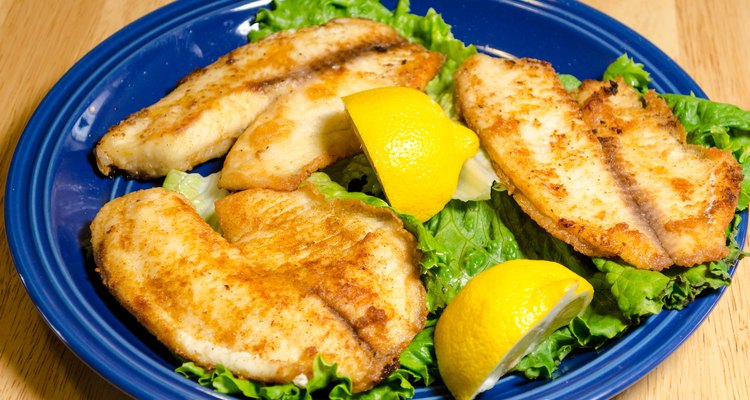
If you don't have cooking oil, frying fish will require another adequately heat-tolerant fat. Cooking oil with a high smoke point -- meaning it can be heated enough without chemically breaking down -- is the standard frying fat. Lard and vegetable shortening can be used in a pinch, but won't hold up well enough. While butter may be a tempting substitute, it burns too easily to work well for frying. The answer is clarified butter, also known as ghee or drawn butter. When water and milk solids are removed from butter, pure liquid butterfat, or clarified butter, is left. Its high smoke point and delicate flavor make it a perfect fat in which to pan fry fish.
Ghee Whiz
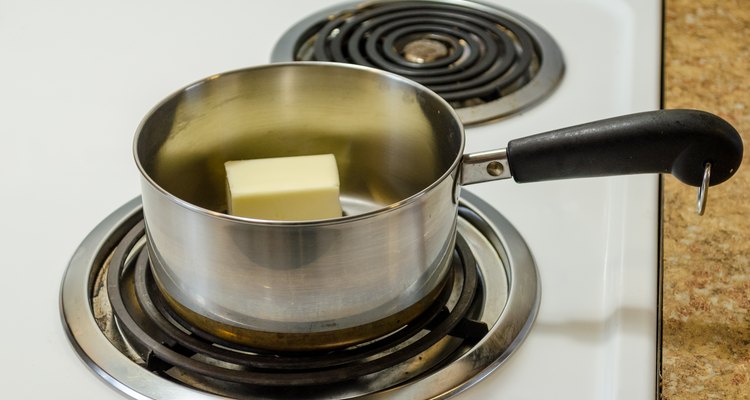
Place about half a stick of unsalted butter in a pan or small saucepan. Put it over a burner on low heat to gently melt the butter until it separates into three distinct layers.
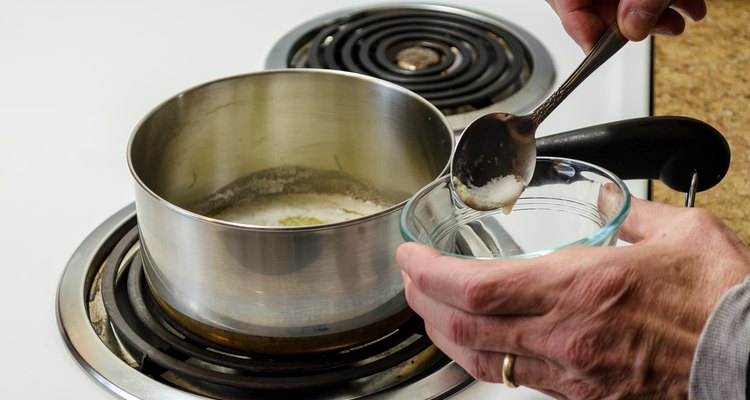
Skim off all of the top layer of white froth with a spoon and dispose of it. This foamy layer is made up of whey protein; the golden middle layer is the butterfat and the sediment at the bottom is the milk solids.

Remove the butter from the heat once it stops bubbling. Let it sit for two or three minutes while the milk solids finish settling at the bottom of the pot or pan.
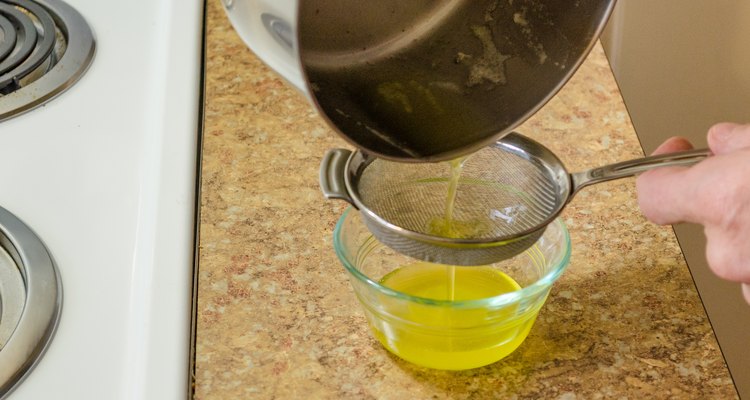
Strain the butterfat from the milk solids by pouring it into a cup through a fine-meshed sieve or cheesecloth. The liquid in the cup is clarified butter, and it's a suitable fat for frying your fish without cooking oil.
Fry Away
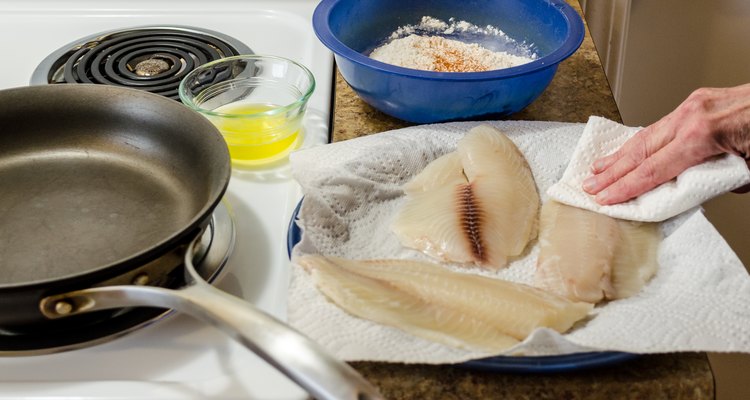
Rinse your fish fillet or steak off with cold water and pat it dry with paper towels. Season it to taste with salt, pepper and any other seasonings you want to use. Dredge the fish in all-purpose flour mixed with cornmeal.
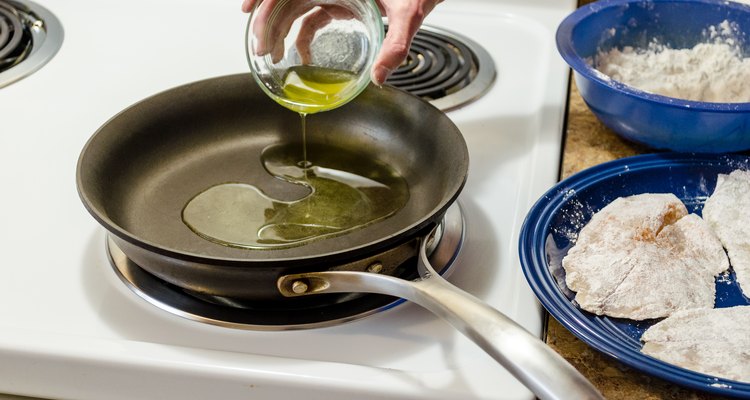
Heat a large, heavy-bottomed skillet over high heat for a few minutes. Reduce the heat to medium-high and pour in enough clarified butter to coat the bottom. Swirl it around in the pan.
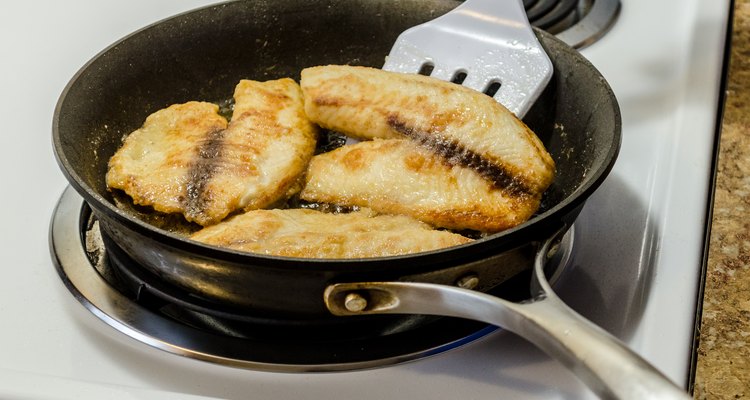
Add the fish fillet or steak to the skillet and leave it in place. Fry it until the bottom nicely browns, then turn it with a spatula. Continue frying until the second side nicely browns and the fish's flesh is opaque all the way through. Cut into it with a fork to check; the flesh should flake easily. Cooking time varies depending on the thickness of the fish, but fillets about 1-inch thick typically need around three minutes per side.
Related Articles
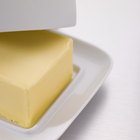
Butter Substitute for Molten Lava Cake
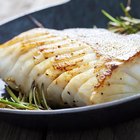
How Do I Pan Fry Fresh Fish With a ...
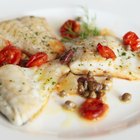
How to Poach Sea Bass
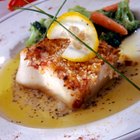
How to Pan Fry Sea Bass

How to Cook Cod Fish With the Skin
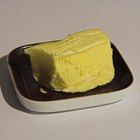
How to Store Ghee

How to Cook Salmon Fillets on the Stove ...

How to Separate Fat Without a Fat ...
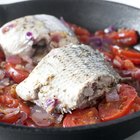
How to Cook Hog Fish
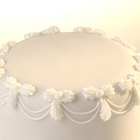
How to Make a White Decorator Icing

How to Make Cake Frosting Into a ...

How to Bake Lingcod

How to Cook Tilapia With Orange Juice & ...

How Long Do You Cook Haddock Fillets in ...

How to Make Homemade Gravy With a Roux ...
How to Cook Fried Flounder Fillets

How to Cook White Perch
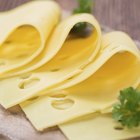
How Many Calories Are in a Slice of ...

How to Boil Conch in the Shell

How to Flash-Fry Fish
References
Tips
- Thaw frozen fish overnight in the refrigerator. If you're cooking it the same day, submerge it in a leak-proof package in cold water for one to two hours. Replace the water with colder water every 30 minutes.
Writer Bio
Eric Mohrman is a food and drink, travel, and lifestyle writer living in Orlando, Florida. He has professional experience to complement his love of cooking and eating, having worked for 10 years both front- and back-of-house in casual and fine dining restaurants. He has written print and web pieces on food and drink topics for Visit Florida, Orlando Style Magazine, CrushBrew Magazine, Agent Magazine, Dollar Stretcher Magazine, The 863 Magazine and other publications.
Photo Credits
Lawrence Roberts/Demand Media